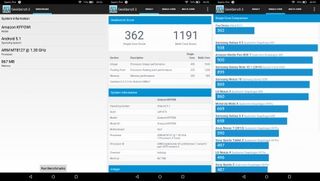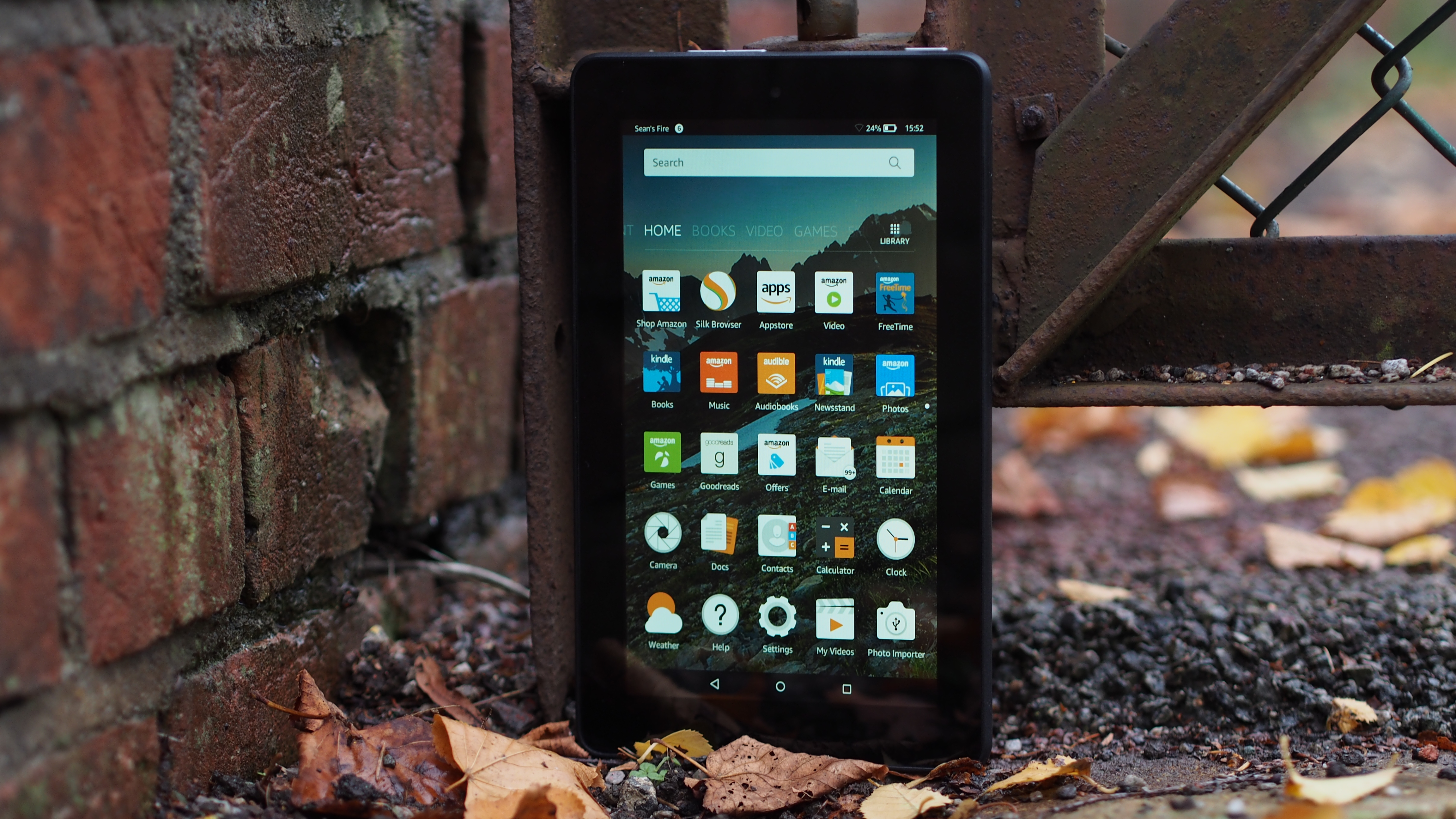Why you can trust TechRadar
The Fire's performance is actually quite good, especially at this price, thanks to a quad-core ARM processor clocked at 1.3GHz and backed up with 1GB of RAM.
Although the Fire doesn't exactly chew through demanding titles, it runs most games smoothly. While it doesn't quite reach the peaks of the iPad Air 2, or the Samsung Galaxy Tab S2, it can't be faulted.
This is mostly backed up by the Geekbench scores. The Fire achieved a single-core score of 359, beating the two-year-old Nexus 7 (2013), and a multi-core score of 1191, trumping the Moto G, which runs a quad-core Snapdragon 400.

Although these numbers may not seem that spectacular, remember that this is a device that costs £50 (US$50) – and at that price performance is pretty impressive, if not world-beating.
With 1GB of RAM, the Fire isn't exactly a multi-tasking monstrosity, but it generally gets the job done. Switching between apps is the same as on stock Android: selecting the square soft-key gives you access to an extended Rolodex of apps, although running more than a few at a time will cause them to fully reload.

Performance is one of the areas in which Amazon might have been expected to make some compromises; thankfully, however, this is not the case.
This isn't a device for power-users, but it's certainly more than capable of the light browsing and Candy-Crush marathons that take up much of the casual user's tablet time.
Battery life
Without hundreds of notifications running throughout the day, and with a frugal processor and an anaemic screen resolution, the Fire's battery consistently achieved the seven hours quoted by Amazon, especially when playing video.
This, understandably, was not the case when gaming. As might be expected the tablet does heat up a little during long sessions and the battery can drop quite quickly, from seven hours to around three – but that's still the length of a short flight.
In general use, I found I could eke out a day and a half of web surfing, watching a little iPlayer, some casual gaming and listening to Spotify, which is around average. Standby time meanwhile was excellent, with the device dropping only around 5% of its charge overnight.
Be warned, however, that there are no battery-saver modes here, which is disappointing given that power-saving modes are fast becoming a staple of new mobile devices. For travellers and commuters this is likely to be a turn-off, as the feature can be a virtual life-saver.
Current page: Performance and battery life
Prev Page Amazon ecosystem and apps Next Page Storage, keyboard and cameraSean is a Scottish technology journalist who's written for the likes of T3, Trusted Reviews, TechAdvisor and Expert Reviews.














